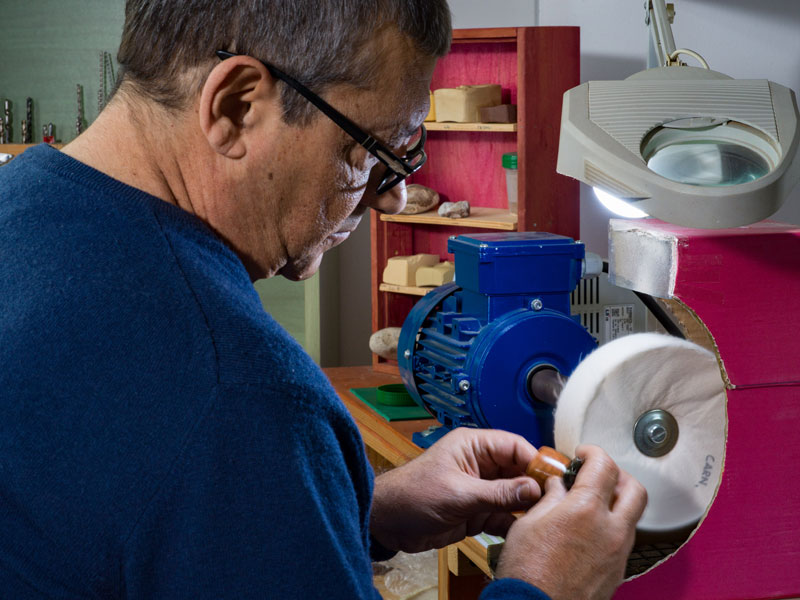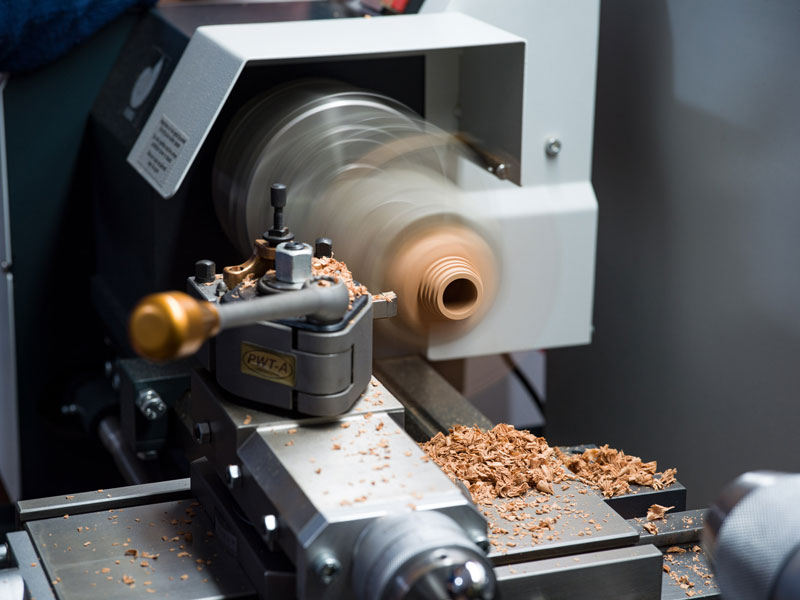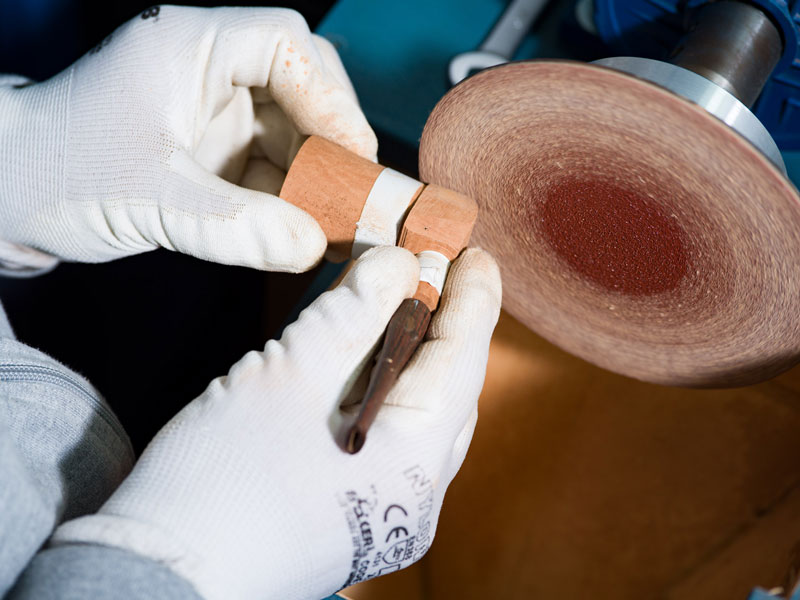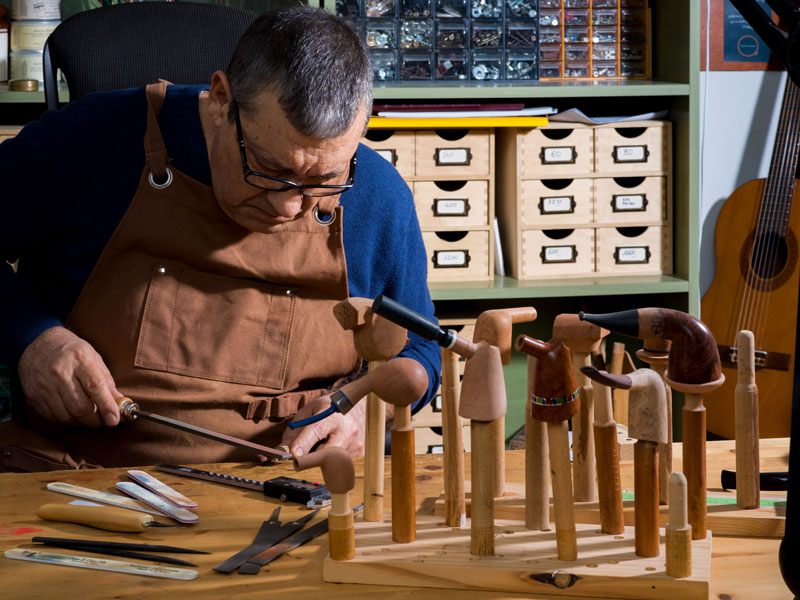
Nearly all my equipment has been produced on purpose for making pipes. In this a pipe maker’s activity differs from that of many other craftsmen. For example, it is true that everybody uses the sand disk as it is also true that everyone adapts the tool to his own way of working.
In the same way, when visiting various pipe makers’ workshops, you’ll never find the same French wheel. Big or small, with a central fastening nut or with Velcro, made of aluminium or steal, everybody works at his best with his own tool, made for his own hand. This makes me think of Kant, the philosopher, who wrote: “The hand is the window of the mind”. Actually, each disk will give a different result according to the user. This is one of the alchemies of handwork that makes the final product really unique.
But long is the way to get to feel the chosen tool as an extension of one’s own hand. The first legitimate instinct is to follow the indications of those who know more.
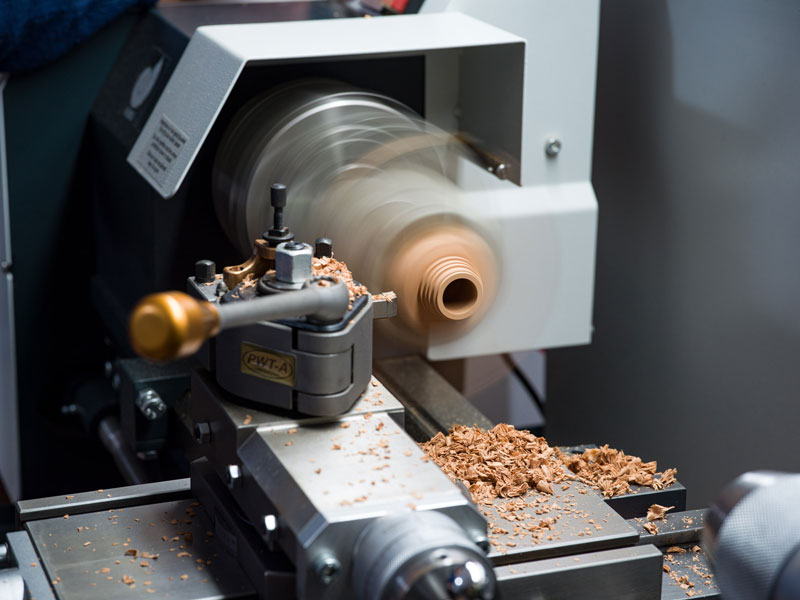
This leads to a false confidence: if I use the same tool as my teacher, I’ll get good results more easily. But when the results do not arrive, the discouragement comes: the pipe I am holding doesn’t match with the model I have in mind, I cannot but acknowledge that I am making mistakes. From this stems a process of growth: being ready to recognise the mistake and finding in it the urge to look for the solution.
Sooner or later, a sincere and passionate curiosity will inevitably make us understand where we were wrong and, with the time, the confidence in our skill will increase. We could say that technique develops thanks to a constant dialectic between the right way to do a thing and the willingness to experience mistakes. We’ll soon discover that, in most cases, the mistake is in wanting to apply methods or to use tools that are not fit for our hands, that is for our mind. A good teacher recommends this to his pupil: learn the basic technique and find your own way.
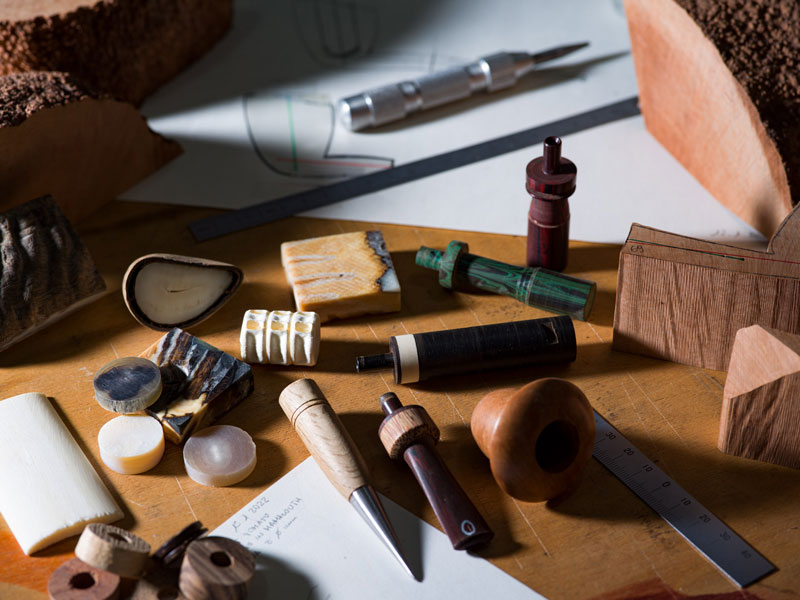
My workshop covers an area of 16 square meters, enough to move easily among the machines, the wood dust and a self-made desk inspired by that of Tom Eltang. My experience has made me understand that, to make good pipes, you don’t need large spaces but rather enthusiasm, proper tools and several years of training.
